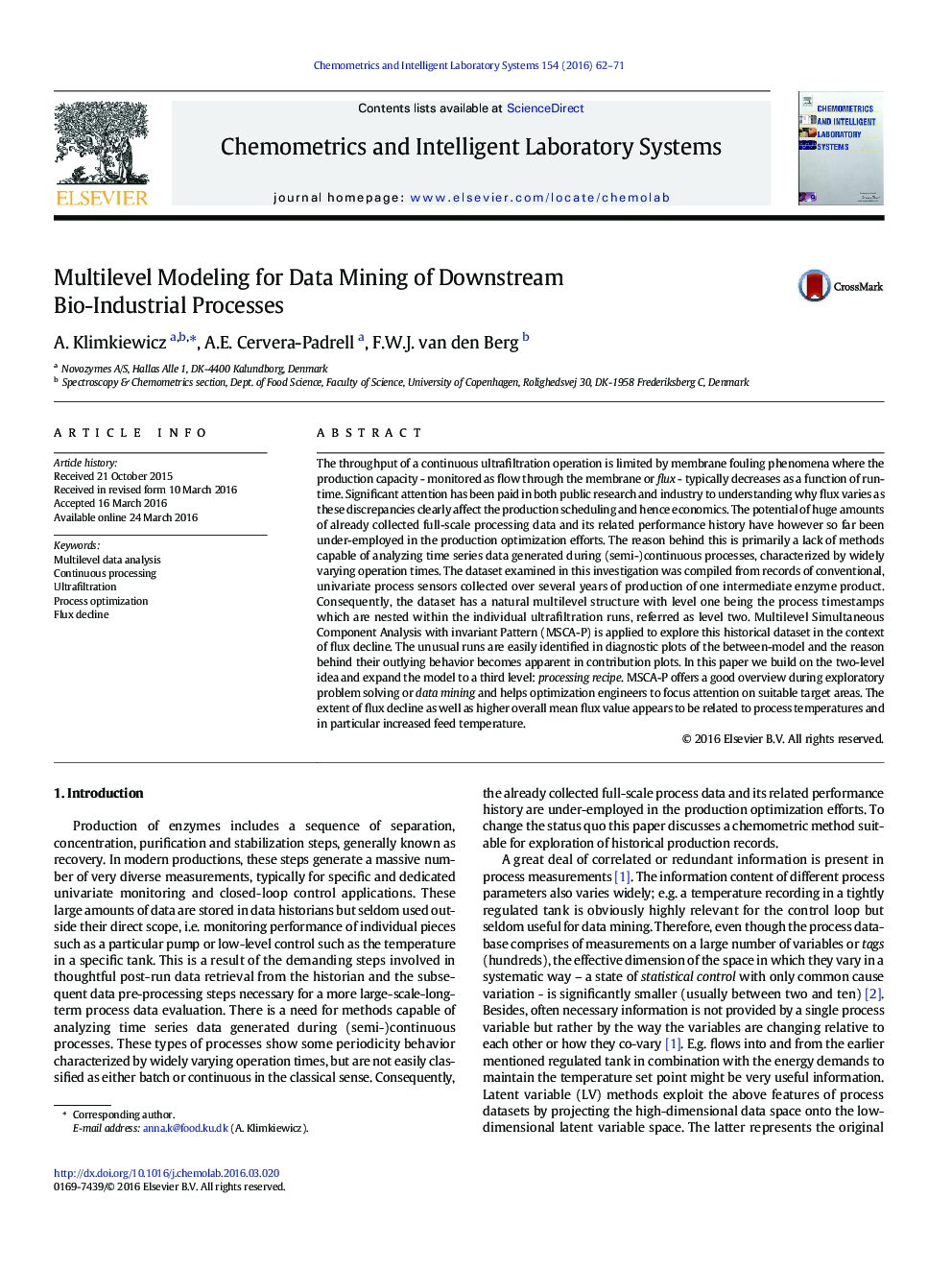| کد مقاله | کد نشریه | سال انتشار | مقاله انگلیسی | نسخه تمام متن |
|---|---|---|---|---|
| 1180312 | 1491525 | 2016 | 10 صفحه PDF | دانلود رایگان |

• Full-scale, continuous ultrafiltration is examined in context of flux decline.
• Dataset is compiled from historical records of conventional, univariate sensors.
• The latent behaviour of the system is modelled on three levels by MSCA-P technique.
• Method has proven to be helpful in exploratory problem solving.
• Processing temperatures affect membrane fouling observed as a decline in flux.
The throughput of a continuous ultrafiltration operation is limited by membrane fouling phenomena where the production capacity - monitored as flow through the membrane or flux - typically decreases as a function of run-time. Significant attention has been paid in both public research and industry to understanding why flux varies as these discrepancies clearly affect the production scheduling and hence economics. The potential of huge amounts of already collected full-scale processing data and its related performance history have however so far been under-employed in the production optimization efforts. The reason behind this is primarily a lack of methods capable of analyzing time series data generated during (semi-)continuous processes, characterized by widely varying operation times. The dataset examined in this investigation was compiled from records of conventional, univariate process sensors collected over several years of production of one intermediate enzyme product. Consequently, the dataset has a natural multilevel structure with level one being the process timestamps which are nested within the individual ultrafiltration runs, referred as level two. Multilevel Simultaneous Component Analysis with invariant Pattern (MSCA-P) is applied to explore this historical dataset in the context of flux decline. The unusual runs are easily identified in diagnostic plots of the between-model and the reason behind their outlying behavior becomes apparent in contribution plots. In this paper we build on the two-level idea and expand the model to a third level: processing recipe. MSCA-P offers a good overview during exploratory problem solving or data mining and helps optimization engineers to focus attention on suitable target areas. The extent of flux decline as well as higher overall mean flux value appears to be related to process temperatures and in particular increased feed temperature.
Journal: Chemometrics and Intelligent Laboratory Systems - Volume 154, 15 May 2016, Pages 62–71